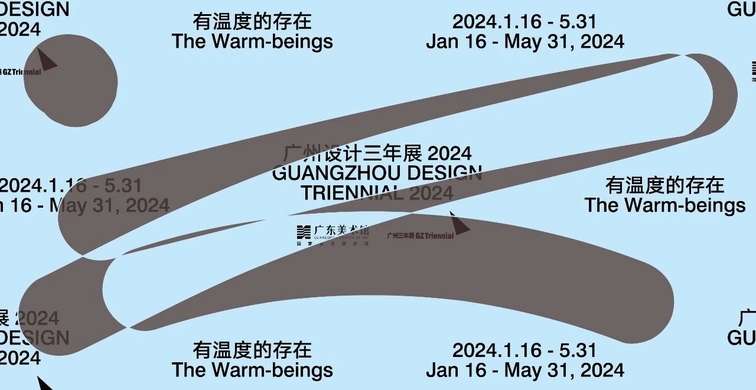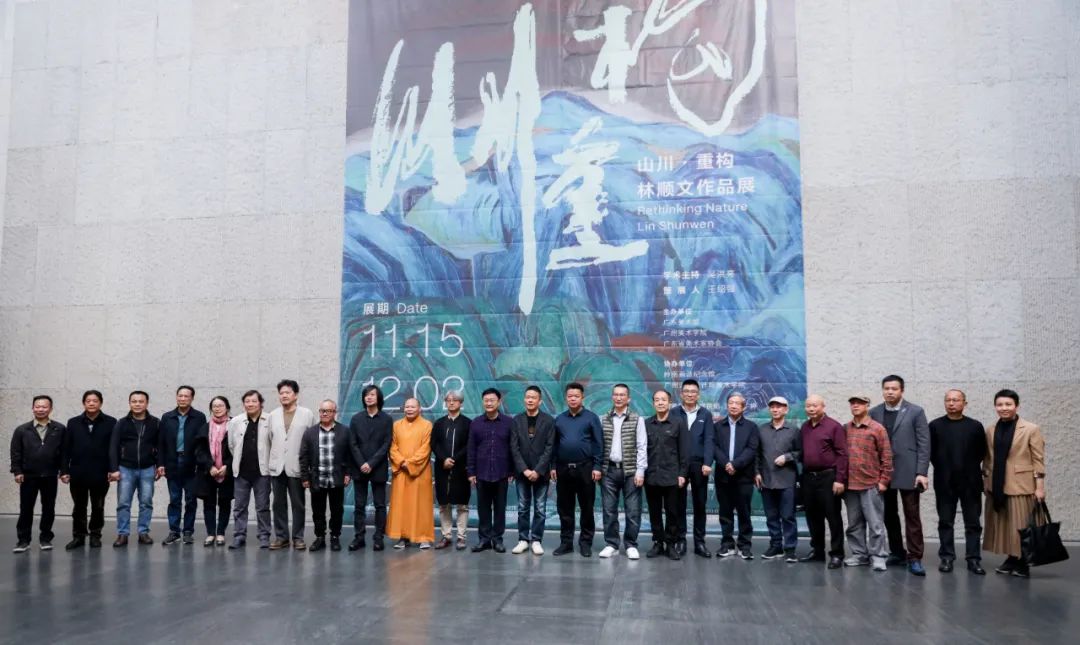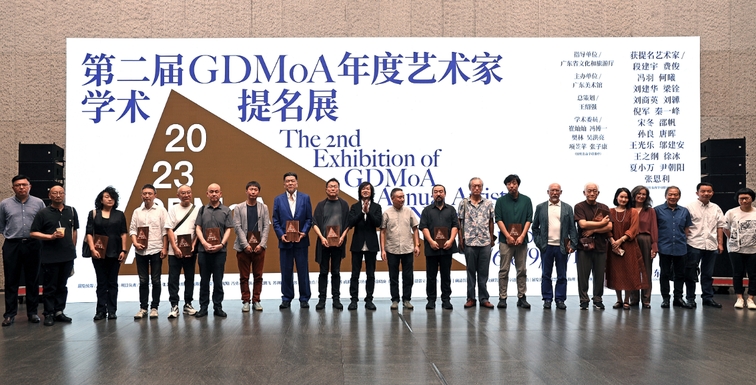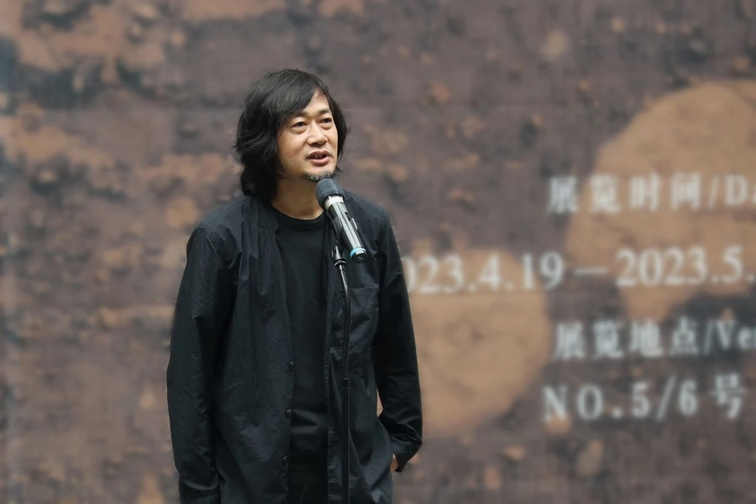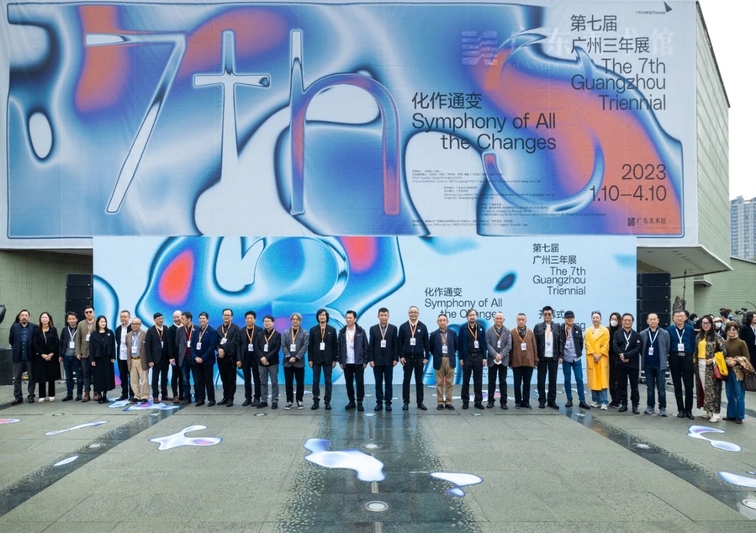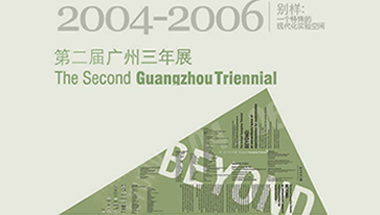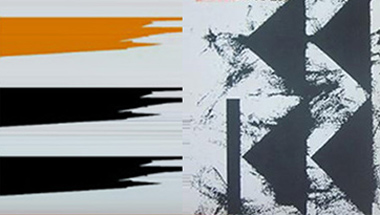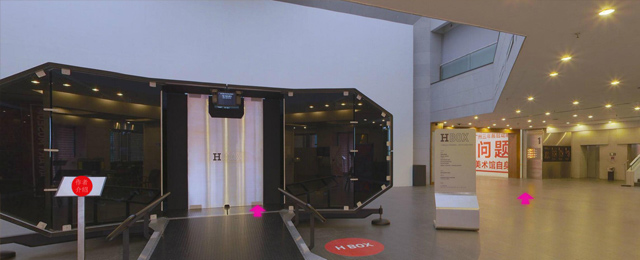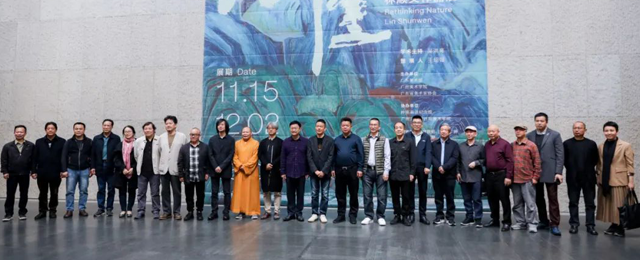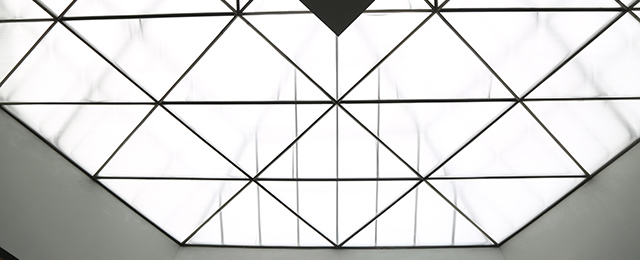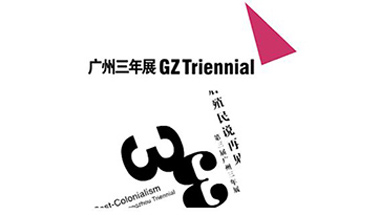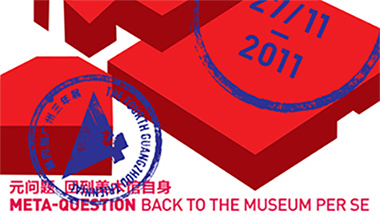探索艺术家的身份与职能—— 评“矢控——原弓作品展”《画廊》
录入时间: 2013-12-18
撰文:陈文哲 梁笑
2013年11月8日,艺术家原弓带着他题为“矢控”当代艺术作品展来到广东美术馆。观众们应该都还记得威尼斯双年展中中国馆的“消失”,记得这个中国当代艺术家的才情与创造力。从透明之局系列到512系列再到空香,原弓的艺术实践一直都表现出强烈的社会参与感,与当下社会的重大议题呼应。此次在广东美术馆的展览名为“矢控”,在古文里“矢控”一词中的“矢”同“施”,可取施行之意,“矢控”在这里就有实行控制的意思。然而艺术家却刻意保留了一种可能“失控”的状态,作为一种个人全新的创作方式探索。
“矢控”这个展览呈现三个系列的作品,分别为“祥云”,“矢控”和“关系”系列。布展过程分为三个阶段,其中7号厅的“关系”系列将首先与观众见面。从观看来说,时空上的渐进给这次展览造成了一种四维的概念,观众同时看到了整个展览的架构图景、成品、以及正在布置的半成品。观者参观一次之后离开现场,他与展览的关系也没有就此结束,反而是在时间的推进中并行,观众和展览持续对彼此产生着影响。这样的方式并不等同于观看表演或者行为艺术现场,因为作品本身就包括了从开始发生到结束整个过程,而观众并没有看到其全貌,只是作为一个节点见证了作品的一个剖面。令人激动的不单这一点,艺术家结合不同主题利用装置,影像和图片手稿等元素,巧妙借用各种新老媒介之间的互文或对话,营造了一个充满当代性的作品面貌。观众对作品的理解并无先后的限制,而且可以在各个元素间建立联系生发自己的理解,这便是当代艺术作品带给人无限灵感的动人之处。
艺术家通过“矢控”展览做了展出和创作方式上的探索,采用了跨界的工作方式,将艺术家、策展人、美术馆,媒体以及各方参与者都纳入到作品的创作过程中来。“这个过程既增加了展览多方面协调的复杂性与难度,也考验着传播的持续效应与应对媒体的能力”,艺术家如是说。原弓沿用了一直以来的现成品介入的创作方式。自杜尚在他的作品中引入现成品的概念以来,艺术家们就没有放弃过对现成品艺术的探索,而今天观众对现成品的普遍接受态度也表明它仍有价值。原弓曾经在他与策展人沈其斌的对话中提到他的艺术是在营造剧场,这甚至把观众与作品在媒体中的传播也囊括在内。只是这不是传统意义上单向叙事性的剧场表演,尤其在“矢控”中,参与布展人员甚至随机出现的观众都能够介入剧场,于是我们不禁要质问自己的身份。艺术家汪建伟也曾利用剧场的概念进行创作,他形容“当代艺术是个敞开的房子” 。在关系美学中“我们能够通过艺术领域之外的关系制造(而不是以内关系,如社会经济方面的)解释目前艺术的特点:个体和团体之间的关系、艺术家和世界之间的关系,以及通过传递观者和世界之间的关系”,当代艺术的这一方面在此次展览空间里得到了体现。观众应该可以意识到,他们在观看的同时,自身也与未完成的展览空间一道成了一个作品,艺术家与观众的界限也被模糊。概念上身份的调换带给人全新的视角,观众成了艺术家作品的因素,而这个因素是艺术家无法控制的,同时观众对待展览的态度与行为可能也会超出艺术家的预期:换句话说,在上帝退场,作者也已被宣称“死亡”的当代艺术语境里,艺术家到底是不是上帝或者说能不能扮演上帝的角色。这些思考正呼应了“施控”与“失控”这样一对看似矛盾的概念。
带着创作转型的探索,原弓考虑了作品中社会因素介入带来的线索机缘。这直接涉及到了艺术家与观众之间的关系问题。法国策展人Nicolas Bourriaud曾写到“人类和神的关系领域之后、人类和物体关系之后,今天的艺术关注人与人之间的关系,像90年代初的很多艺术作品。艺术家越来越细腻地关注作品在观众里引起的关系,以及发明一些新社会形式。这个特殊制作决定一个新的意识形态和实践以及新的正式领域。我的意思是除了作品以内的关系之外,人与人之间关系的参考标准也完全变成一些艺术‘形式’”。然而这是从西方当代艺术的脉络出发产生的思考,原弓作品中总是透露出的东方的哲思似乎更接近他本人的创作理念。从7号厅“关系”中展出的被雾弥漫的图片和项目手稿可以想见“空香”和香港油街云雾缭绕的玄虚气氛。原弓有着考古学的背景,也许是因为这样,他的创作不管外表多么光怪陆离,内里似乎总透出一股古久的情结。艺术家用了“矢控”一词,也是巧妙利用了人们对汉字的视觉感受,短短两字生发出庞大的思考空间。传统艺术中,古诗文的创作要引起欣赏者的共鸣,中国文化一直以来都不乏对人的关注。原弓以往的作品也总是从社会事件出发,包含着他对当下人生存状态的思考,原弓的艺术探索也许真的可以为联系当代美学与传统美学的上下文提供一条线索。
通观这次展览,原弓用他熟练的当代艺术语言传达了对艺术家身份与职能的探索,这可解读为他自身如何定位自己在展览中的角色和作用,探索新的创作展览方式,以及对于社会与人的生存状态的持续关注和深入思考。
Explore the Identity and Function of an Artist On “Reining: Solo Exhibition by Yuan Gong”
By Chen Wenzhe and Liang Xiao
On November 8, 2013, Yuan Gong launched his solo exhibition named “Reining” in Guangdong Museum of Art. Our memory is still fresh about how he creatively and ingeniously made the Chinese Pavilion “disappear” during the Venice Biennale. From “Transparent Scene”Series, “512 Quake Series” to “The Scented Air”, Yuan Gong’s practice of art has always corresponded to the major issues of the society, thus showing a strong sense of social responsibility. This time, his exhibition is named “Reining”, which reads “Shi Kong” in Chinese. “Shi” means “exert” in ancient Chinese, and “Shi Kong” here means “exert control”. However, as an exploration for a brand new creative style, the artist deliberately created an exhibition that may easily “lose control”.
The exhibition has three series, namely “Auspicious Clouds”, “Reining” and “Mechanism”. It has three phrases among which the “Mechanism” in Hall 7 is the first series to meet the audience. The arrangement of the exhibiting space is still ongoing throughout the exhibition period, this means the show has become four-dimensional—the audience can see how the exhibits are set up, completed installations and uncompleted ones. The viewers’ relationship with the exhibition wouldn’t end after just one visit; instead, it would continue to evolve in a way that the exhibition and its audience can still influence each other as time goes on. But this is not the same as watching a live show or performance art, because even though this exhibition contains a whole process, its audience can only witness one slice in the continuum. What’s more, the artist instills a lot of modernity into his art by using installations, images and manuscripts to create a kind of interaction between old and new media. There are no rules stipulating what the audience should see first and what next, the audience can form their own understanding about how different elements are connected in this exhibition, which is a very fascinating characteristic of modern artworks.
The artist has explored a new way in art creation and exhibition which crosses the boundaries of different fields and integrates artists, curators, museums, media and other players into this process. “This way, the difficulty and complexity in coordinating the exhibition is increased, and our ability to cope with the media and keep the continuous effect of the publicity is also challenged”, so said him. Yuan Gong carries on the tradition of employing ready-made materials in his creative process. Ever since Marcel Duchamp introduced the concept of “ready-made”, artists have never stopped their efforts in pushing it further, and audience’s wide acceptance of it nowadays also speaks for its value. In one of his talks with Shen Qibin(the curator), Yuan Gong said that his art is a theatre which includes the audience and the artworks’ spread in the media. His art is no longer a traditional one-directional theatre show, but it also includes the staff and even random audience, which leads us to question our traditional roles. Wang Jianwei also used the concept “theatre” in his art. He said, “Modern art is an open house.” In relational aesthetics, “we can interpret art by those relations outside of the art arena (instead of those that are in it, for example, social or economic ones): the relation between an individual and a group, an artist/audience and the world. This aspect of modern art has been highlighted in this exhibition. The audience should realize that they themselves have become part of the artwork along with the uncompleted exhibition space. The boundary between the artist and the audience is blurred. This conceptual change of identity brings forth a brand new perspective in which the audience becomes a part of the artwork that the artist has no control over. At the same time, the audience’s attitude and behavior may also exceed the artist’s expectation. In other words, it prompts us to think: in this modern artistic context where god withdraws, and the writer has been declared “dead”, is artist the new god, or can he play god? These thoughts correspond to the seemingly paradoxical pair of concepts: “exert control” and “lose control”.
In his process of exploring creative transformation, Yuan Gong tried to find leads in the social elements of art. This directly concerns the relation between the artist and the audience. Nicolas Bourriaud, a French curator, once wrote, “After the relationship between human and god, and then between human and objects, today’s art focuses on the relationship between individuals just like those works in the beginning of 1990s. Artists pay closer attention to how their works may stir new relationships between different people or new forms of society. This special way of thinking may form a new ideology in the art world and provides new playgrounds for the artists. What I am saying is that besides the relationships within the artwork, taking the relationships between individuals as references may well become new art ‘forms’”. This line of reasoning might be a good fit for western modern art, but as is shown in his works, Yuan Gong’s creative ideas seem to be more in line with eastern philosophy. The misty pictures and project manuscripts displayed in the “Mechanism” in Hall 7 seem to have brought us to the “scented air” and the transcendent atmosphere in Hong Kong’s fogged streets. Yuan Gong was trained in archeology, and maybe that is why no matter how bizarrely colorful his works are, they always carry some kind of ancient complex. His use of the Chinese characters—“Shi Kong”—is also a smart move to utilize the visual impact of those words to generate an enormous space for imagination. In ancient Chinese art, any prose that intends to strike a chord with its reader would not hesitate to show its caring for people. The same is true with Yuan Gong’s works; they express his thoughts on people’s current state of being by reflecting on various social issues. Maybe Yuan Gong’s artistic exploration really can serve as a clue to connect traditional and modern aesthetics.
With this exhibition, Yuan Gong conducted an exploration into artists’ identity and function with his artistic eloquence. We can see how he defines his role and function in exhibitions, and we can also see his efforts in searching a creative way of exhibiting art as well as his close attention to and profound contemplation on the society and people’s life.

开放时间:每周二至周日9:00-17:00(逢周一闭馆)
每日16:30停止入场
地址:广东省广州市越秀区二沙岛烟雨路38号
咨询电话:020-87351468
预约观展:
-
冬日的寒凉抵不过大家的热情。 广东美术馆的这个冬天, 因为观众朋友...

